6 Projects to Create Beautiful, Water-Saving Outdoor Spaces
Find out how to replace your lawn with a garden, make your landscape more permeable, install a greywater system and more
Annie Thornton
April 23, 2018
Houzz Editorial Staff
Water use in the landscape is a practical and environmental challenge that all regions face, regardless of whether they have too little or too much water. In the 2017 U.S. Houzz Landscape Trends Study, homeowners said drainage was their biggest challenge.
For this Earth Day, we’ve collected six outdoor improvement projects that will not only enhance your home’s beauty but also load it up with water-wise benefits. You’ll get details on how to improve drainage on your property, keep water and contaminants out of storm drains and cut down on water and energy use.
For this Earth Day, we’ve collected six outdoor improvement projects that will not only enhance your home’s beauty but also load it up with water-wise benefits. You’ll get details on how to improve drainage on your property, keep water and contaminants out of storm drains and cut down on water and energy use.
1. Replace Your Lawn With a Garden
For families with young kids or pets, lawns have their place, but if you have a lawn as a default landscape feature, consider your alternatives. In regions prone to drought, replacing, or decreasing the size of, your lawn with a garden can cut down on your water usage and also save you money. For areas where water is plentiful, other plants and garden features can do a better job of capturing, redirecting and draining water.
Gardens in all regions can benefit from losing the lawn, both aesthetically and environmentally. Not only will you gain a distinctive garden design you may be more likely to use, you can also increase your garden’s biodiversity, cut down on its maintenance — especially if you select plants native to the region — and increase wildlife habitat.
Cost: The cost varies with the size of the project, your site and what elements — trees, shrubs, perennials, paving — you are replacing your lawn with.
See the full project
For families with young kids or pets, lawns have their place, but if you have a lawn as a default landscape feature, consider your alternatives. In regions prone to drought, replacing, or decreasing the size of, your lawn with a garden can cut down on your water usage and also save you money. For areas where water is plentiful, other plants and garden features can do a better job of capturing, redirecting and draining water.
Gardens in all regions can benefit from losing the lawn, both aesthetically and environmentally. Not only will you gain a distinctive garden design you may be more likely to use, you can also increase your garden’s biodiversity, cut down on its maintenance — especially if you select plants native to the region — and increase wildlife habitat.
Cost: The cost varies with the size of the project, your site and what elements — trees, shrubs, perennials, paving — you are replacing your lawn with.
See the full project
2. Lay a Path of Pavers and Gravel
Garden paths made of pavers and gravel are not only attractive, they’re also Earth-friendly, as their loose gravel joints allow water to drain directly back into the soil rather than running off to a drain required by hardscape materials such as solid concrete and mortared brick.
Cost: Cost varies widely depending on materials and size of the path. Landscape designer Zach Hammaker of ZH Design advises clients to budget between $25 and $50 per square foot for a professionally installed path. This range of cost includes materials and the installation.
See the full project
Garden paths made of pavers and gravel are not only attractive, they’re also Earth-friendly, as their loose gravel joints allow water to drain directly back into the soil rather than running off to a drain required by hardscape materials such as solid concrete and mortared brick.
Cost: Cost varies widely depending on materials and size of the path. Landscape designer Zach Hammaker of ZH Design advises clients to budget between $25 and $50 per square foot for a professionally installed path. This range of cost includes materials and the installation.
See the full project
3. Add a Rain Garden
Instead of sending the rainwater that lands on your property downstream via pipes and storm drains, rain gardens drain it on site, reducing strains on our stormwater systems, naturally cleaning the water as it percolates back down into the earth and creating habitat for local wildlife. Rain gardens can be as small as a planted bed at the bottom of a downspout or large enough to take up a significant portion of the landscape.
Rain gardens don’t only benefit rainy regions. In arid climates they help recharge the aquifers, and in areas with more regular rainfall they can prevent flooding and rainwater from overwhelming storm drains and water systems downstream, all while creating a beautifully planted space.
Cost: Expect to pay $3 to $5 per square foot to install one yourself, and $7 to $12 per square foot if you hire a professional.
See the full project
Instead of sending the rainwater that lands on your property downstream via pipes and storm drains, rain gardens drain it on site, reducing strains on our stormwater systems, naturally cleaning the water as it percolates back down into the earth and creating habitat for local wildlife. Rain gardens can be as small as a planted bed at the bottom of a downspout or large enough to take up a significant portion of the landscape.
Rain gardens don’t only benefit rainy regions. In arid climates they help recharge the aquifers, and in areas with more regular rainfall they can prevent flooding and rainwater from overwhelming storm drains and water systems downstream, all while creating a beautifully planted space.
Cost: Expect to pay $3 to $5 per square foot to install one yourself, and $7 to $12 per square foot if you hire a professional.
See the full project
4. Design a Green Roof
This isn’t a weekend project, or one you’ll likely want to tackle yourself, but a green roof is a project that more people are considering to beautify their home’s exterior and help insulate their homes, reduce runoff pollution, save on energy costs and extend the life of their roofs. Once the roof is growing, small wildlife can also use this as an additional habitat. Some green roof designs even incorporate an outdoor seating area for homeowners.
Green roofs bring a permeable, planted surface closer to the source of rainfall. In lighter rains they can intercept and rerelease water as transpiration before it even runs off the roof. During longer and more intense rainstorms, green roofs can slow down and reduce runoff, lessening the load on other stormwater features in your landscape and minimizing the potential for downstream flooding.
If you like the idea of adding a green roof but don’t think it is possible for your home, consider installing one on a shed or other garden outbuilding.
Cost: Varies widely depending on where you live. You’re likely to spend $13 to $45 per square foot installed.
This isn’t a weekend project, or one you’ll likely want to tackle yourself, but a green roof is a project that more people are considering to beautify their home’s exterior and help insulate their homes, reduce runoff pollution, save on energy costs and extend the life of their roofs. Once the roof is growing, small wildlife can also use this as an additional habitat. Some green roof designs even incorporate an outdoor seating area for homeowners.
Green roofs bring a permeable, planted surface closer to the source of rainfall. In lighter rains they can intercept and rerelease water as transpiration before it even runs off the roof. During longer and more intense rainstorms, green roofs can slow down and reduce runoff, lessening the load on other stormwater features in your landscape and minimizing the potential for downstream flooding.
If you like the idea of adding a green roof but don’t think it is possible for your home, consider installing one on a shed or other garden outbuilding.
Cost: Varies widely depending on where you live. You’re likely to spend $13 to $45 per square foot installed.
5. Build a Permeable Driveway
Permeable paving doesn’t just have to stop with garden walkways — this is also something you can apply to where your cars go. From pavers with permeable joints to pavers where the actual material is porous, many options exist.
What is especially important about having your driveway drain into the garden, rather than running off site, is that anything your car tracked or dripped onto the driveway goes directly back into the ground, rather than down the storm drains and into the water systems. Soil mircroorganisms are able to clean out the pollutants and purify the water as it percolates through the soil.
Cost: Typically, you’ll pay $5 to $20 per square foot. The final cost will be affected by the type of paver, your location, the size of the project and the amount of site work required.
See the full project
Permeable paving doesn’t just have to stop with garden walkways — this is also something you can apply to where your cars go. From pavers with permeable joints to pavers where the actual material is porous, many options exist.
What is especially important about having your driveway drain into the garden, rather than running off site, is that anything your car tracked or dripped onto the driveway goes directly back into the ground, rather than down the storm drains and into the water systems. Soil mircroorganisms are able to clean out the pollutants and purify the water as it percolates through the soil.
Cost: Typically, you’ll pay $5 to $20 per square foot. The final cost will be affected by the type of paver, your location, the size of the project and the amount of site work required.
See the full project
6. Install a Greywater System
If you keep a bucket in your shower to collect water to use in your garden, then you’re already using a form of greywater, the gently used water from showers, bathtubs, laundry and sinks. You can take this a step further by directing your greywater directly into your landscape through pipes that connect to your house (this is a great way to water trees). Greywater systems vary in complexity, with laundry-to-landscape systems being the most popular and straightforward.
Not only does a greywater system capture and repurpose water that would otherwise be sent to the storm drains, it also reduces your home’s carbon footprint because the water no longer needs to be treated. Additionally, it returns water to the aquifers and recharges the soils, all the while helping you grow a beautiful garden.
Cost: If you are hiring someone, expect to pay at least $1,000 for a laundry-to-landscape system, $2,000 for a branched drain system and $4,000 for a pumped system. Complex systems can be quite a bit more.
See the full project
More
Native Plants 101
To Manage Stormwater Sustainably, Understand Your Site
Get ideas for more Earth-friendly outdoor projects
If you keep a bucket in your shower to collect water to use in your garden, then you’re already using a form of greywater, the gently used water from showers, bathtubs, laundry and sinks. You can take this a step further by directing your greywater directly into your landscape through pipes that connect to your house (this is a great way to water trees). Greywater systems vary in complexity, with laundry-to-landscape systems being the most popular and straightforward.
Not only does a greywater system capture and repurpose water that would otherwise be sent to the storm drains, it also reduces your home’s carbon footprint because the water no longer needs to be treated. Additionally, it returns water to the aquifers and recharges the soils, all the while helping you grow a beautiful garden.
Cost: If you are hiring someone, expect to pay at least $1,000 for a laundry-to-landscape system, $2,000 for a branched drain system and $4,000 for a pumped system. Complex systems can be quite a bit more.
See the full project
More
Native Plants 101
To Manage Stormwater Sustainably, Understand Your Site
Get ideas for more Earth-friendly outdoor projects
Related Stories
Green Building
12 Pros Share the Top Sustainable Features They’re Using
Design, building and landscape pros discuss the ways they’re creating comfortable, efficient and eco-friendly homes
Full Story
Landscape Design
To Manage Stormwater Sustainably, Understand Your Site
Follow this guide to learn how water moves through your landscape and how best to manage it
Full Story
Gardening Guides
How to Have Your Own Mini Wildflower Meadow in the City
These 3 tips will help you find the right plants for the right place to create an appealing garden
Full Story
Green Building
How Traditional Design Can Protect Modern Homes From the Elements
We look at the sustainable magic that happens when traditional architecture meets modern-day living
Full Story
Spring Gardening
Coming Back to Life in the Spring Habitat Garden
A garden designer discovers how patience during this seasonal transition can lead to great rewards and settle the self
Full Story
Landscape Design
12 Sustainable Gardening Ideas From Landscape Design Pros
Create a more earth-friendly garden by planting for pollinators, ditching pesticide use and more
Full Story
Gardening Guides
6 Steps to Creating Your Butterfly Garden
Encourage these fanciful winged beauties to visit your garden while helping restore their fragmented habitat
Full Story
Landscape Design
Add Layers to Garden Beds for Beauty and Sustainability
You can renew nature at home by filling in gaps with native plants and extending the bloom season
Full Story
Green Building
10 Sustainable Features Pros Recommend for Any Home
Improve the comfort, efficiency and ecological impact of your space with ideas from design, building and landscape pros
Full Story
Gardening Guides
Create a Container Wildlife Habitat for Hummingbirds and Butterflies
Don’t let limited space prevent you from welcoming wildlife into your garden
Full Story







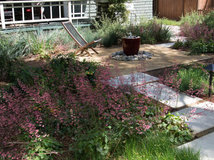
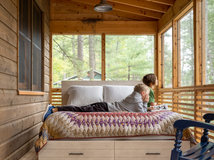
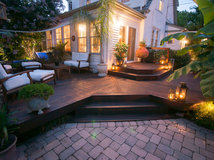
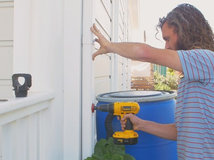
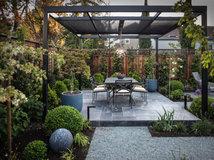
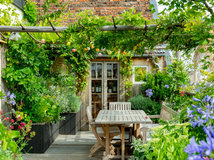
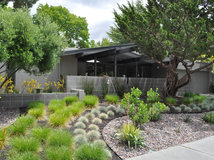
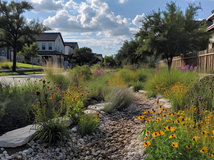

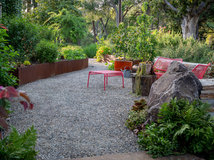
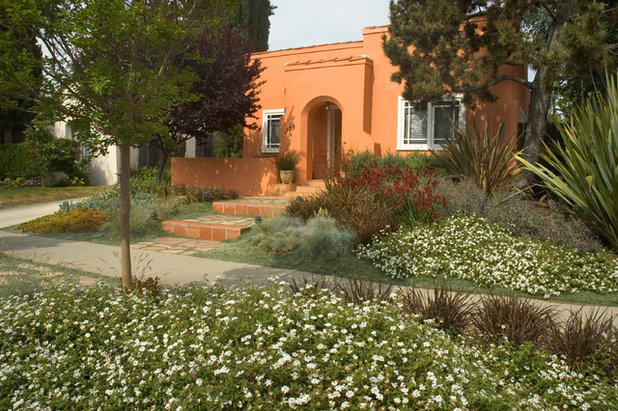
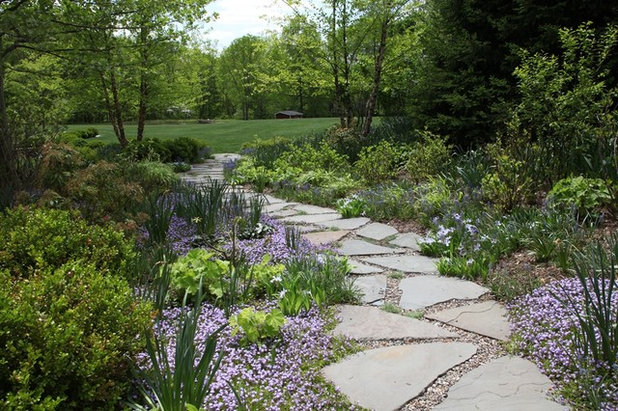
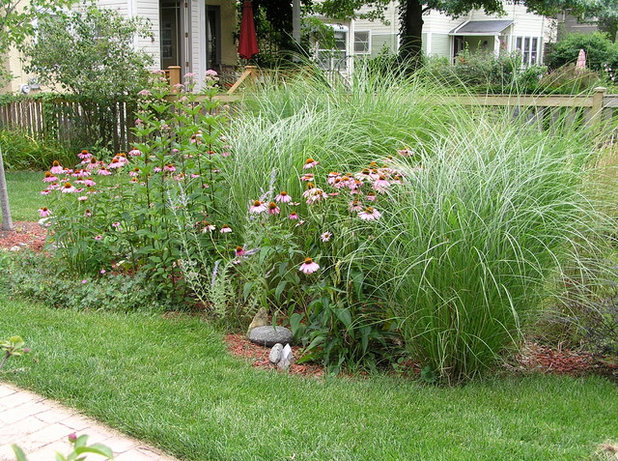
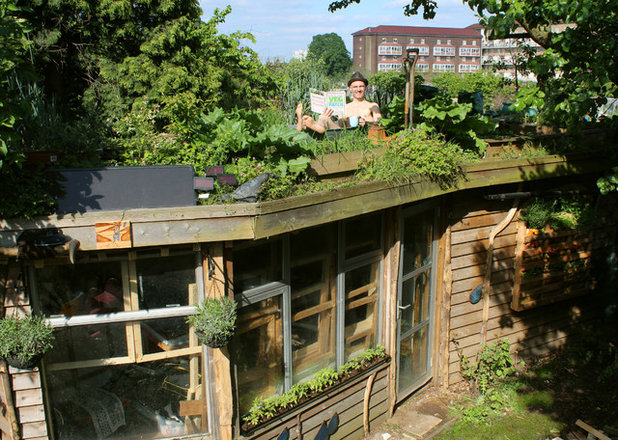
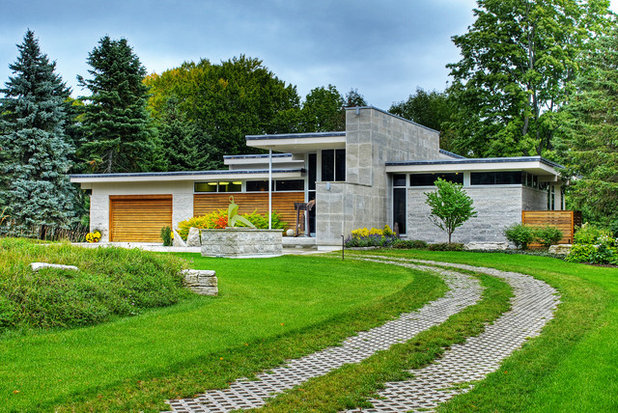
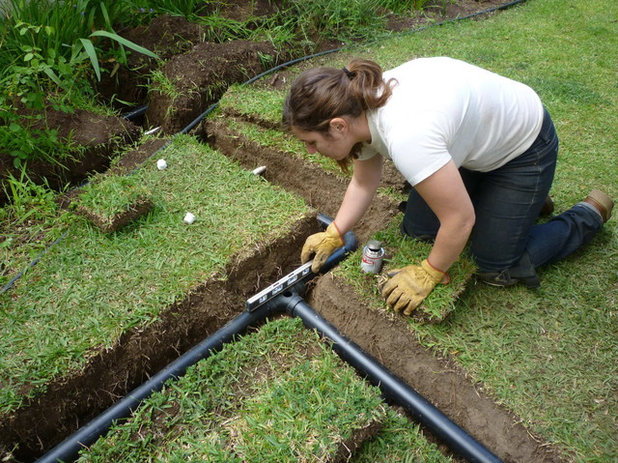






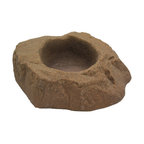
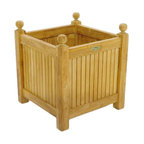
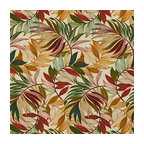
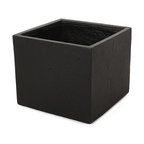

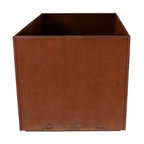
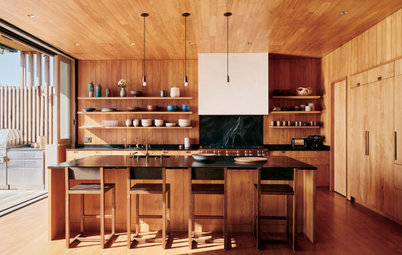
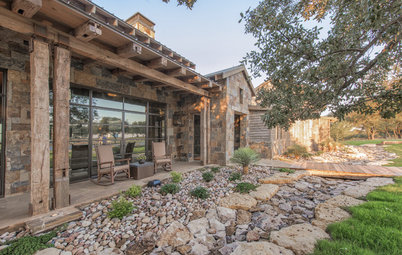
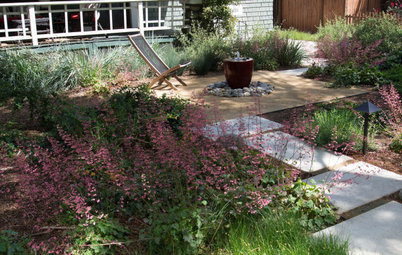
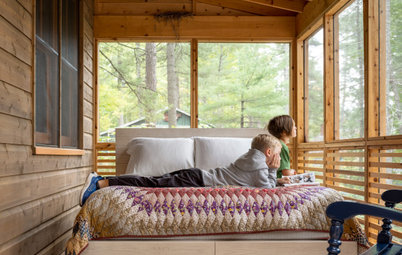
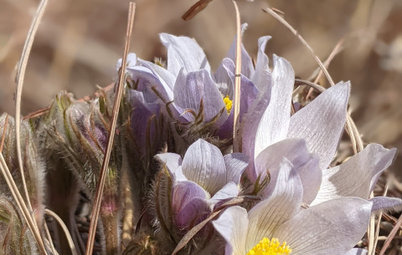
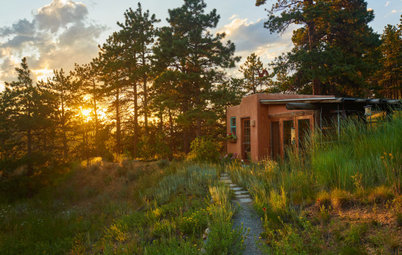
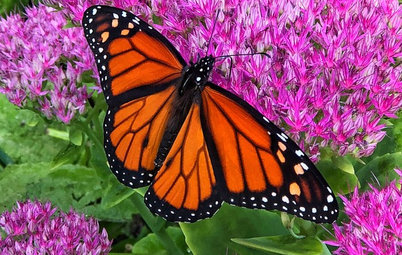
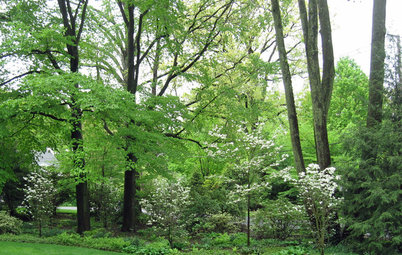
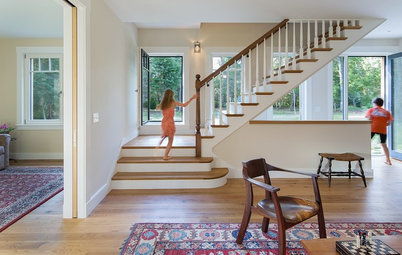
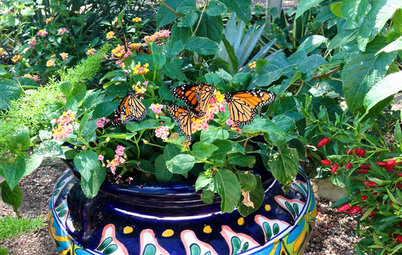
@Fattaneh Oroumchian - NO you can NOT use toilet water in landscape. That is considered "black water". Nothing with food or feces can be called "greywater". No toilet drains, kitchen sink drains or dishwasher drains can go to a greywater system.
Grey water is from showers, washing machines and hand-washing.
You use soap that is tested and known to be safe for plants.
Many of us rural folk use what is called grey water and yes, we are very water wise. Greywater is produced from washing dishes, clothes, showers and, oh, yeah, toilets, too.
Animal by-products don't do well in greywater systems because they just don't decompose without problems.
What is required are special filtration systems for greywater to handle the natural breakdown of waste, cleaning of bacteria including E.coli and an understanding of how it all works. And that means forget chemicals (produced by manufacterers) used in many products including cleaning and cooking and change up to greener sources.
Also think - and educated yourself on how various water companies "clean" water and the sewer that comes out of cities and towns and small villages. Where do you think all this sewage goes? Yup, it get cleaned and filtered through various processes, then pumped back into the pipes for you to drink, use for bath water, cleaning and cooking.
However, for city, suburban, small town folks who want to collected their own water, most systems are not set up to filter sewage; hence the so-called "only bathroom sinks, tubs, showers and washing machines. No common detergents, softeners, and soaps, hair preparations and soaps that are made with many manufactured made chemicals that can be harmful to the plants and soils. So one needs to review all things used and change things up if you want to go greywater just for a few appliances. Instead of softeners, use white vinegar in the rinse cycle or throw in a couple tennis balls or dryer store bought balls into the dryer.
As for sewer systems, ask any person who has their own septic system and produces their own greywater from the toilet. The old style including a tank and leaching field. Today, aerobic systems which are smaller but a bit more complicated produces greywater than can be used on anything except food gardens. Aerobic sewer aka septic systems do require maintenance.
It also means learning how to live without excessive use of garbage disposal (I don't even have one); little fat, grease & oils, cleaners, fabric softener, bleach, diapers, wipes, paper towels, condoms, q-tips, paint, thinners, varnishes, drain cleaners, automatic toilet cleaners, hair combings, dental floss, kitty litter, medicines. And yes, even foods which should be composted separately (I have a separate compost pile).
@lazy_gardens: I suggest you educate yourself on the subject.
If you want to collect your own greywater for non-food plants, you can, but it will be an expense to set up your own to separate all your sewer systems which include kitchen, bathroom and all drains.
Most folks who don't have a system in place will collect rain water to reuse. That, too is an additional expense. Just be ware about what that rain water touches including your roof. Metal roofs are the best for rain water collection. And you need to keep mold/mildew away from your collection system including the tanks.
Very informative, celestina89!